Announcement

Due to the COVID-19 pandemic, all our offices are operating on a skeleton workforce. For inquiries, please get in touch with us via the emails listed on our contact page.
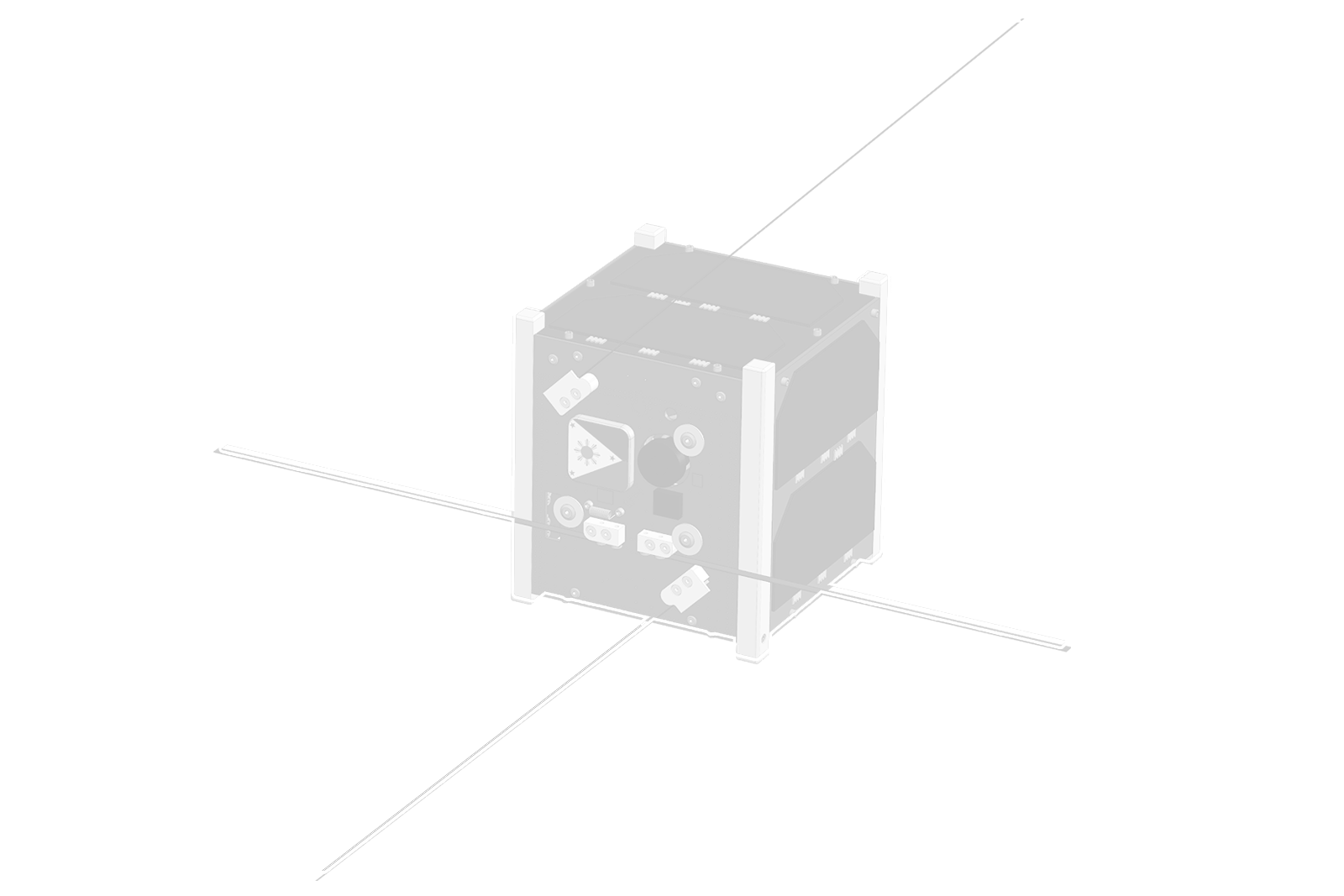
Maya-5 and Maya-6 are the second set of Philippine university-built CubeSats, currently being developed by the second batch of STeP-UP scholars. The project aims to gain and locally extend the knowledge and skills on satellite development acquired from foreign schooling and utilize the domestic capabilities for satellite development. The two cube satellites share the same bus but differ in mission payload. Maya-5 has the same mission payload as that of the Maya-2, and Maya-6 has the experimental on-board computer (OBC-EX) mission payload, which controls the attitude determination and control system (ADCS) and hentenna (HNT) missions. The development of Maya-5 and Maya-6 aims to continue and build on the country’s initiatives on satellite development while transitioning to locally available components and fabricated boards, and manufactured structural frames by designing, building, testing, launching, and operating satellites that will serve as the heritage for future CubeSat missions.
|
Class
|
Cube Satellite (Cubesat)
|
|
Mass
|
-1 kg
|
|
Type
|
Technology Demonstration
|
|
Dimensions
|
10cm x 10 cm x 10 cm (Stowed State)
|
|
Orbit
|
Low Earth
|
|
Payloads
|
|
|
Launch
|
Target: 2022
|
|
Release
|
To be determined
|
|
Mission
|
|
|
Status
|
Under Development
|
24 September 2020
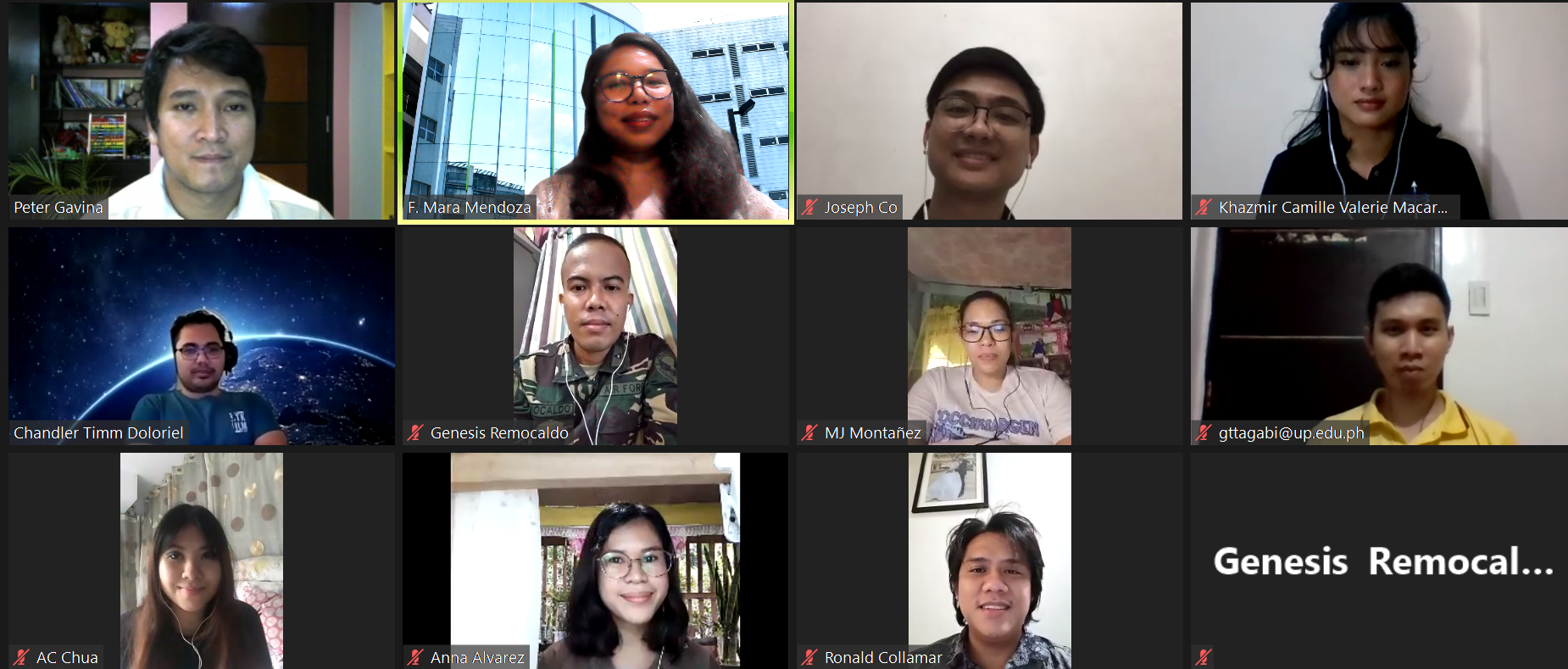
DOST-SEI conducted the scholarship orientation for the accepted 8 graduate students.
The following are part of the second batch of scholars, who
successfully passed and admitted to the program by the UP Diliman National Graduate School
of Engineering and endorsed to DOST-SEI:
· Alvarez, Anna Ruth
· Co, Joseph Jonathan
· Collamar, Ronald
· Chua, Angela Clarisse
· Doloriel, Chandler Timm
· Macaraeg, Khazmir Camille Valerie
· Remocaldo, Genesis
· Tagabi, Gio Asher
06 November 2020

STeP-UP Batch 2 Scholars Kick-off meeting
The kickoff meeting aimed to introduce the new batch of scholars to partners and stakeholders of the program, share the plans and ongoing activities of both the first and second batches of the scholars taking the nanosatellite engineering graduate track, and promote and raise awareness on satellite development and space initiatives to encourage the youth to take more interest in space science and technology.
27 November 2020
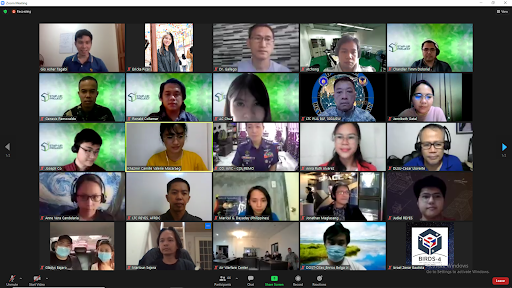
Mission Design Review (MDR)
Mission Design Review (MDR) of the Maya-5 and Maya-6 cube satellites, where the plans for development were presented by the Batch 2 of the STeP-UP Project scholars.
July 8, 2021
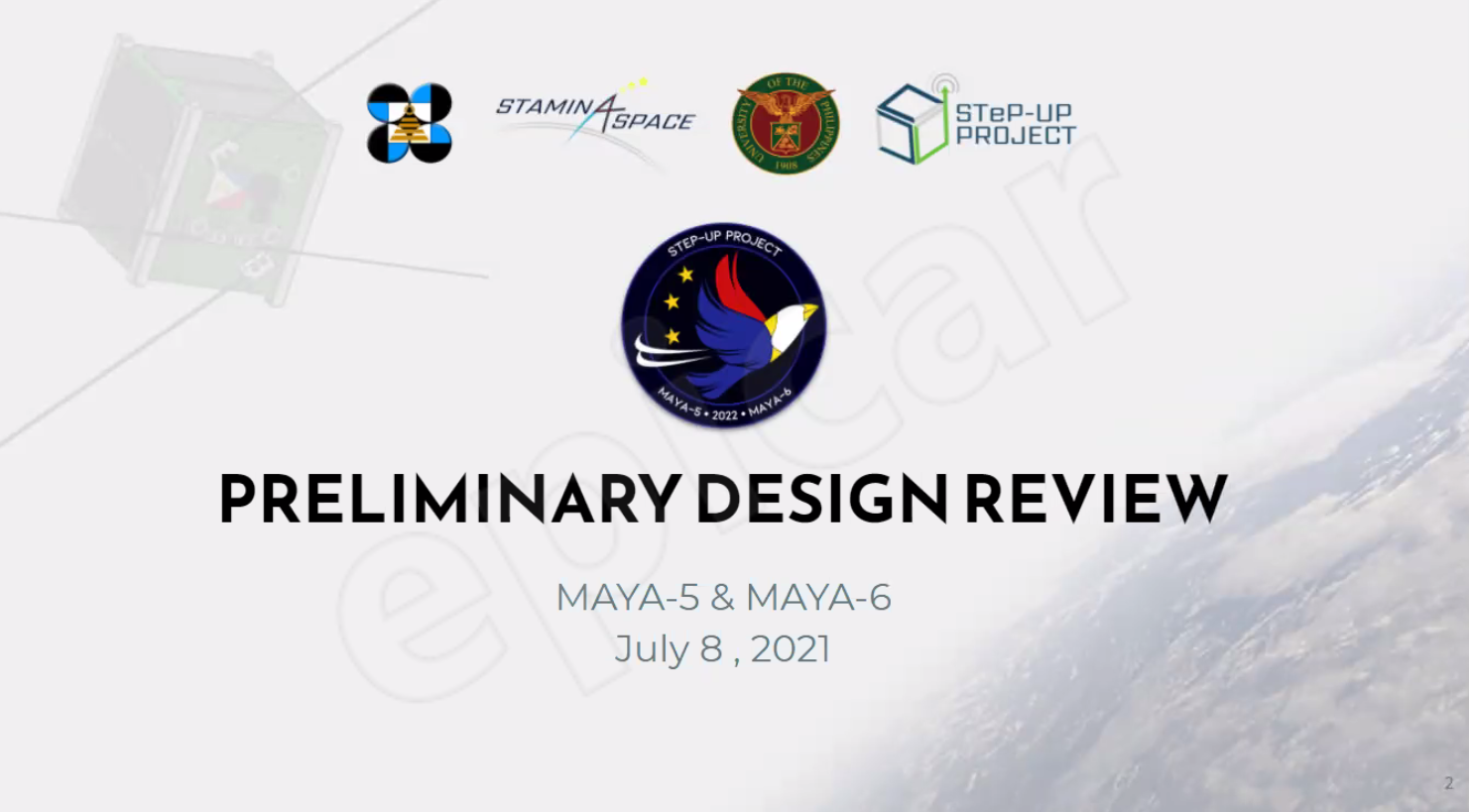
Preliminary Design Review (PDR)
Preliminary Design Review (PDR) of the Maya-5 and Maya-6 cube satellites presented to the STAMINA4Space Program and stakeholders.
August 2022
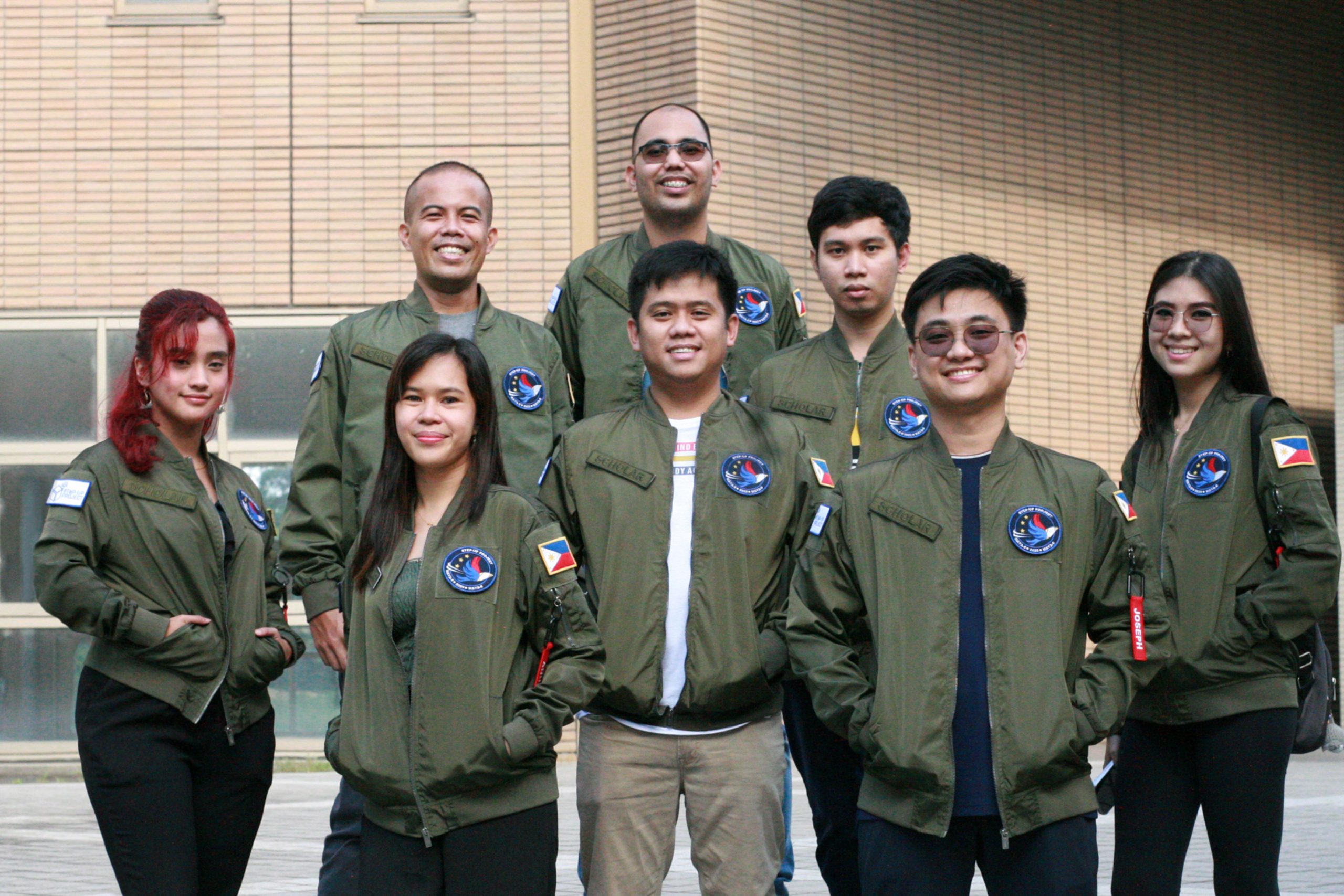
Scholars go to Japan for Maya-5 and Maya-6 CubeSat Testing
September 2022
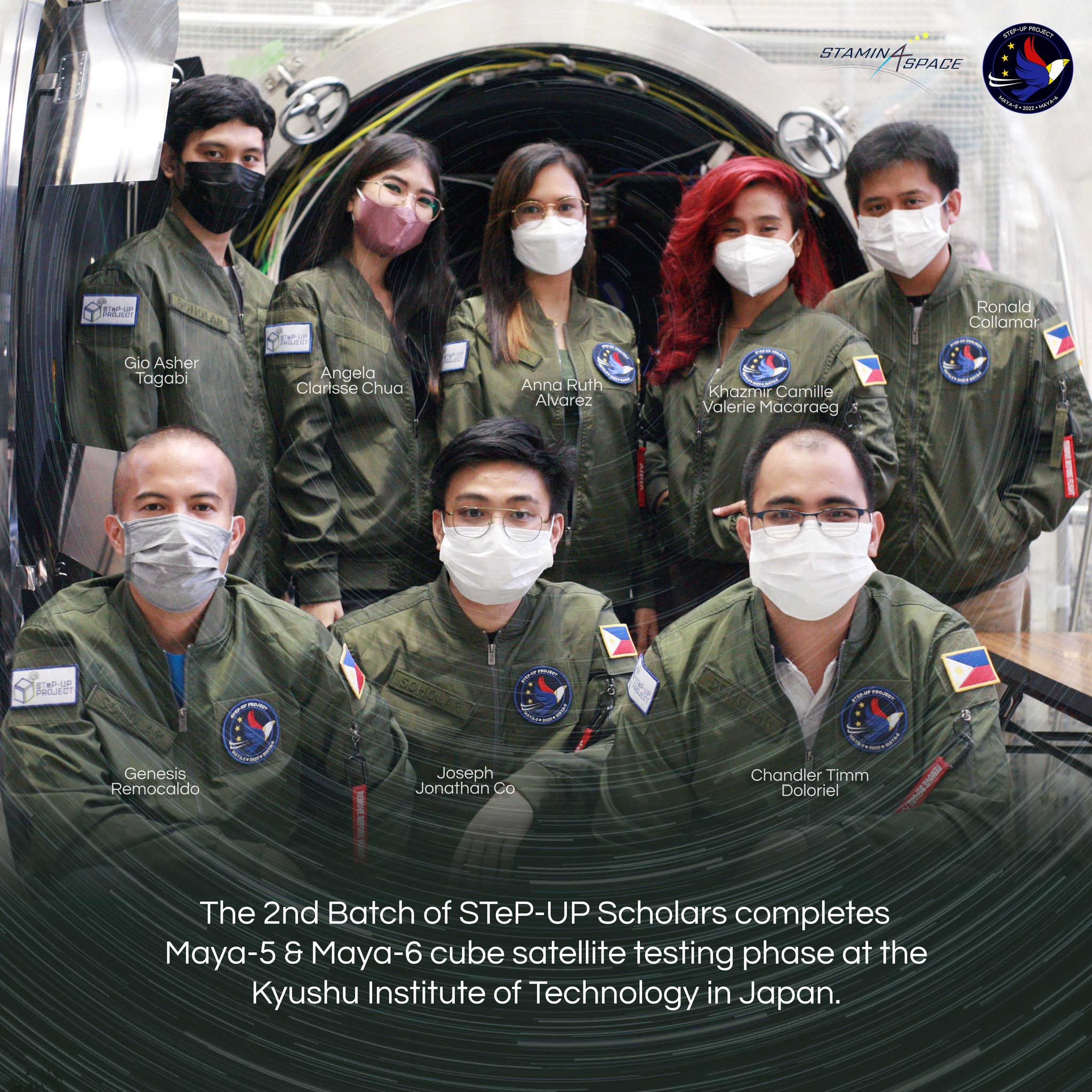
Maya-3 & Maya-4 testing phase in Japan completed
The 2nd Batch of STeP-UP Scholars completes the sandwich program under the Master of Science
(MS) and Master of Engineering (MEng) in Electrical Engineering – nanosatellite
engineering track of the UP Electrical and Electronics Engineering Institute. This scholarship
is an initiative of our Space Science and Technology Proliferation through University
Partnerships (STeP-UP) Project and supported by the Science Education Institute –
Department of Science and Technology.
The sandwich program in Japan includes satellite environmental test training, Maya-5 & 6
cube satellites’ final assembly, and flight model(FM) tests.
6 June 2023
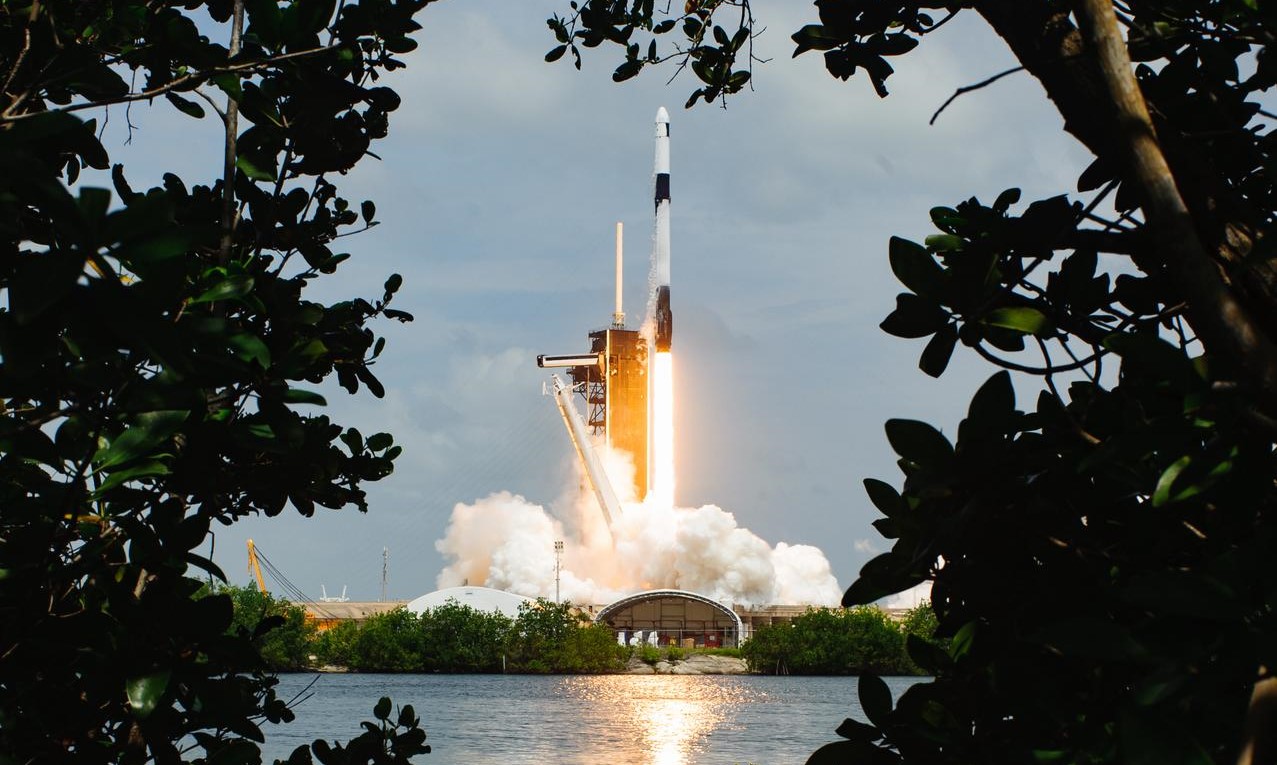
PH-built cube satellites, Maya-5 and Maya-6, launch to space
The Philippines’ next batch of locally developed cube satellites (CubeSats) Maya-5 and Maya-6 were successfully launched to the International Space Station (ISS) on 05 June 2023 at around 11:47 PM PST. Maya-5 and Maya-6 are aboard the SpaceX Falcon 9 as part of SpaceX’s 28th commercial resupply mission. The CubeSats, weighing approximately 1.15 kilograms each, will move along an orbit similar to the space station’s at an altitude of approximately 400 kilometers once they are released to space.
6 June 2023
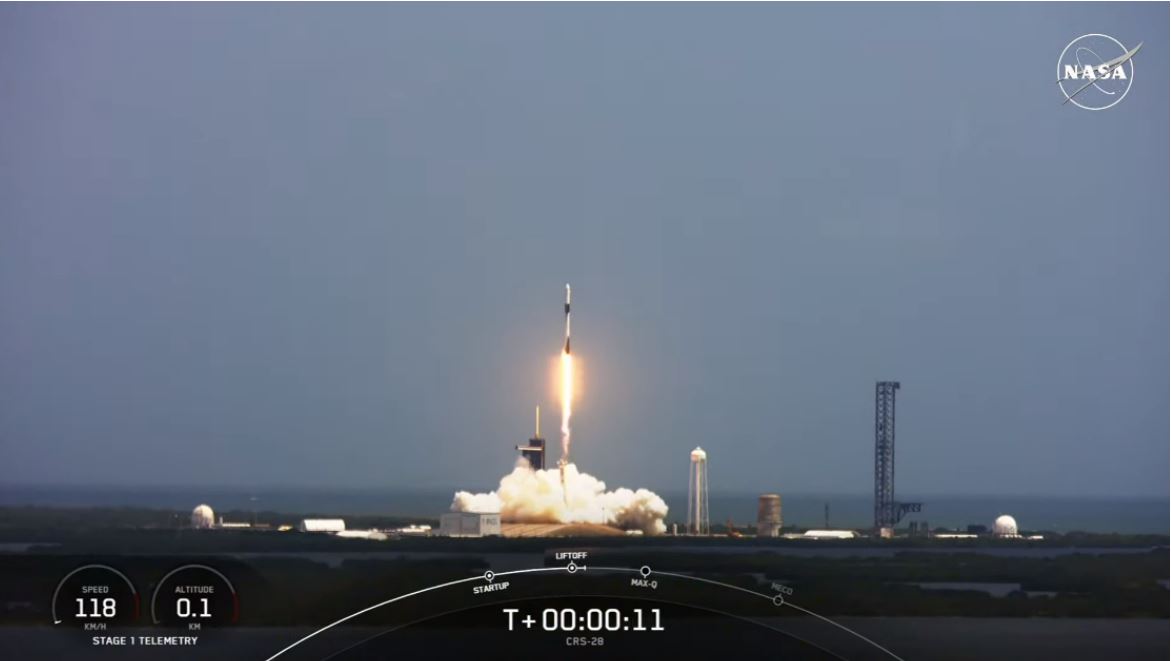
PH-built cube satellites, Maya-5 and Maya-6, deployed to space
The Philippines’ next batch of locally developed cube satellites (CubeSats) Maya-5 and Maya-6 were successfully launched to the International Space Station (ISS) on 05 June 2023 at around 11:47 PM PST. Maya-5 and Maya-6 are aboard the SpaceX Falcon 9 as part of SpaceX’s 28th commercial resupply mission. The CubeSats, weighing approximately 1.15 kilograms each, will move along an orbit similar to the space station’s at an altitude of approximately 400 kilometers once they are released to space.
December 2023

Maya-5 and Maya-6 re-enters atmosphere, ends mission
Almost half a year after their launch to space, Maya-5 and Maya-6 re-entered the Earth’s atmosphere on 9 December 2023 and 6 December 2023 respectively, ending their missions. Maya-5 and Maya-6 are the second set of Philippine university-built CubeSats, developed by the second batch of STeP-UP scholars.
Photo courtesy of JAXA/NASA.